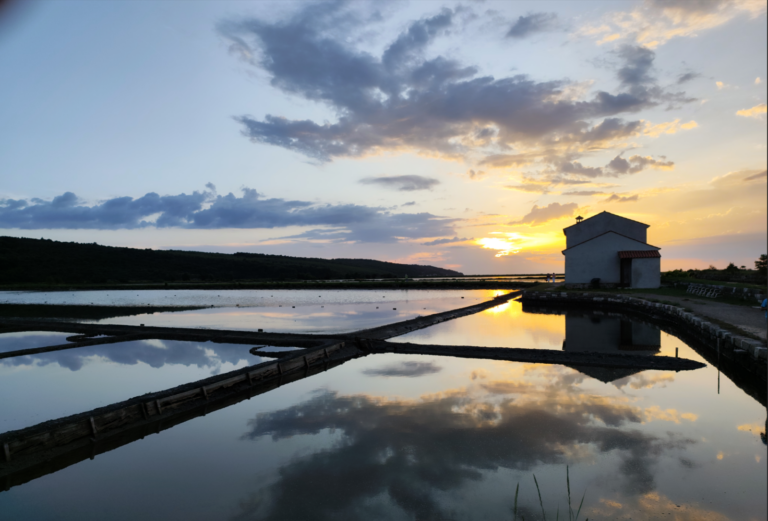On Wednesday, 26 June 2024, the second event of this year’s Salt Pans Cuisine 2024 project took place at the Museum of Salt Panning in Fontanigge, which is part of the Sečovlje Salt Pans Nature Park. For the first time, the Science and Research Centre of Koper joined the organisation of the event as part of the “Grain of salt, crystallisation of coexistence: salt panning as an empirical environmental wisdom” project.
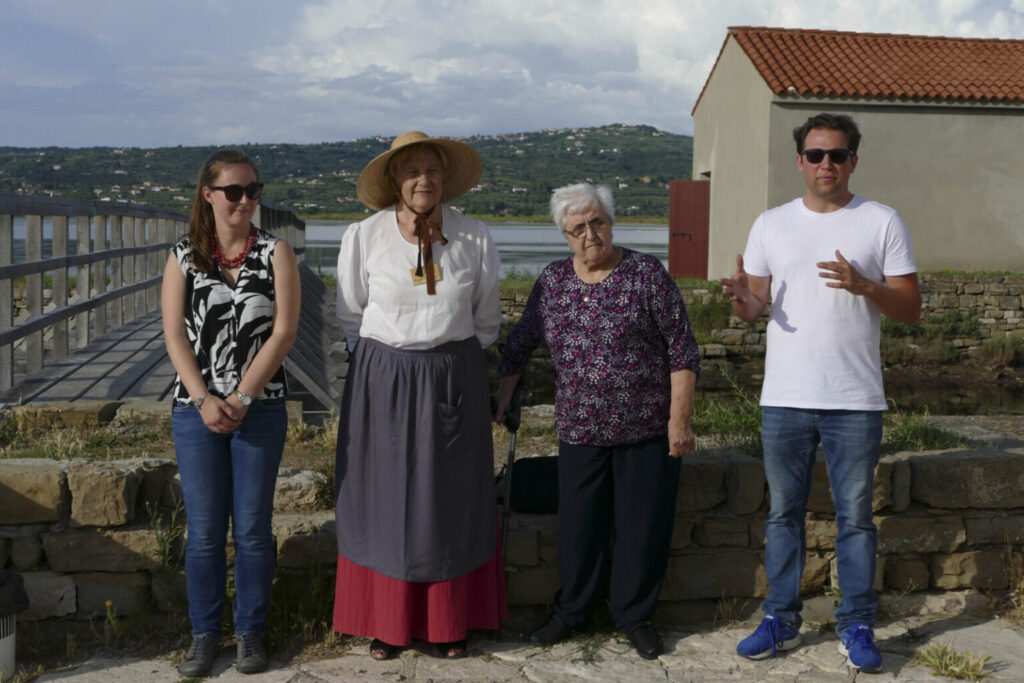
Visitors gathered at 18:00 at the entrance to Fontanigge – Sečovlje Salt Pans Nature Park, from where an electric train took them to the Museum of Salt Panning. There, Matjaž Kljun (Institute for the Protection of Cultural Heritage and the Science and Research Centre of Koper) presented salt panning as a key element of the local cultural heritage, where salt has been produced for centuries in a traditional way that has been handed down from generation to generation. The folklore group Femea dei salinari (family of salt farmers) of the Italian Community of Giuseppe Tartini Piran (Comunità degli Italiani Giuseppe Tartini) presented traditional board games played by local children in the past, which visitors were able to try out at the event. At the same time, a representative of the Sergej Mašera Maritime Museum in Piran conducted pedagogical workshops.
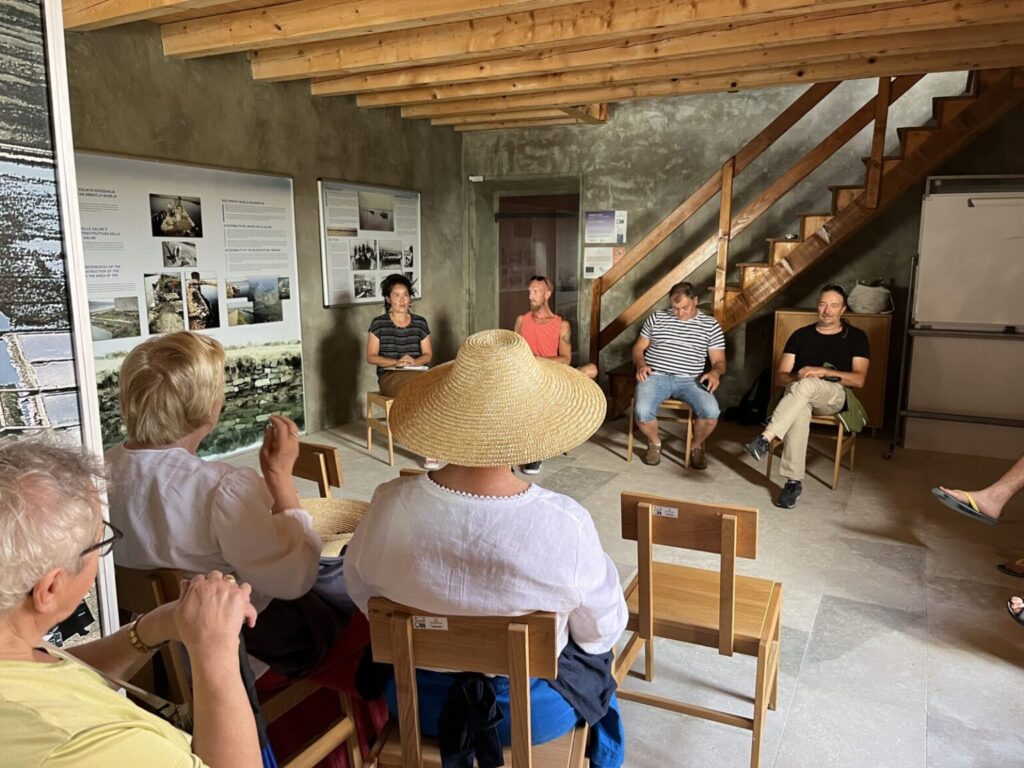
This was followed by a laid-back discussion with the salt farmers about modern salt panning methods, which was moderated by Dr Maja Bjelica (researcher of the Science and Research Centre of Koper, salt farmer and member of the Muzofil Association). Three salt farmers from the Lera area participated in the lively conversation, reflecting on what salt panning means to them, which task in the salt pans they find the hardest and which task they like the most. They outlined salt panning as work and adventure, as well as a way of life. They agreed that one of the more difficult tasks is the “ploughing” of the salt pan surface (also known as kavedin), which occurs after the end of the salt panning season and is carried out by the salt farmers with a special tool (called palot) before the surface is smoothed again. This is a key task for the cultivation and care of the so called petola – the thin, hard layer at the bottom of the salt pans, made up of minerals, algae and cyanobacteria. The salt farmers carefully maintain the petola, as its condition is directly related to the purity and quality of the salt produced. One salt farmer pointed out that the most challenging task for him, who is new to this craft, is to regulate the correct water level in the pools, which is crucial for successful salt production, as it allows for an optimal concentration of salt in the water and thus efficient crystallisation. Salt farmers must therefore carefully control the inflow and outflow of water, taking into account weather conditions, seasons and evaporation phases. Precise water regulation as well as careful maintenance of the petola ensure high salt quality and balanced production. They also said that “fighting nature” is another major challenge, referring to unpredictable weather conditions, in particular the large amounts of rain we have witnessed in the last year, which require additional washing of the salt pan surface and repeatedly waiting for seawater salinity to rise.
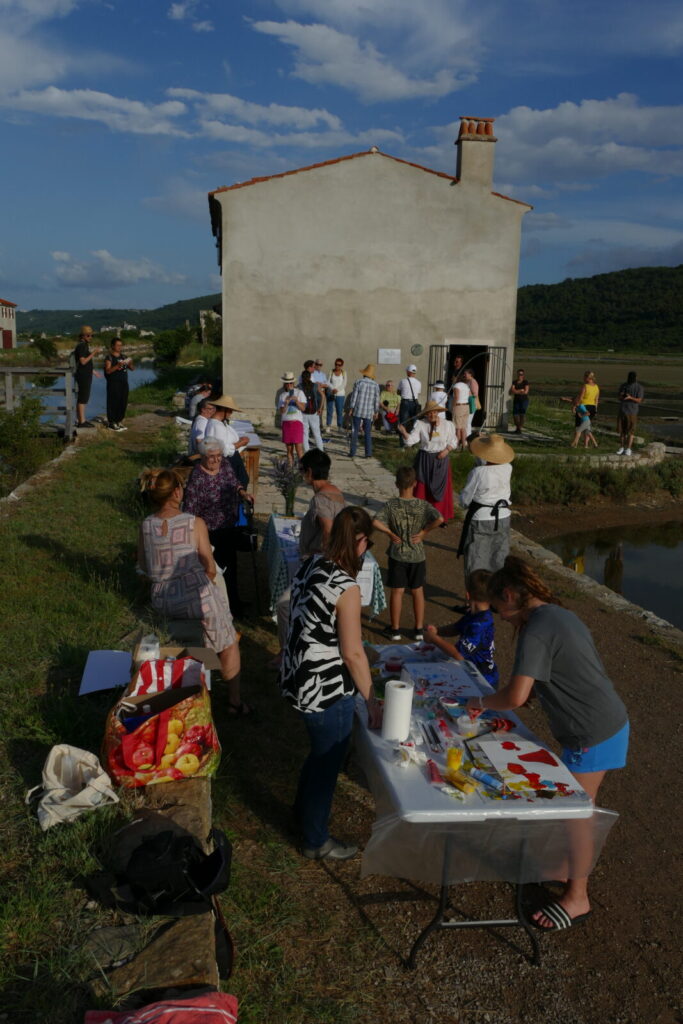
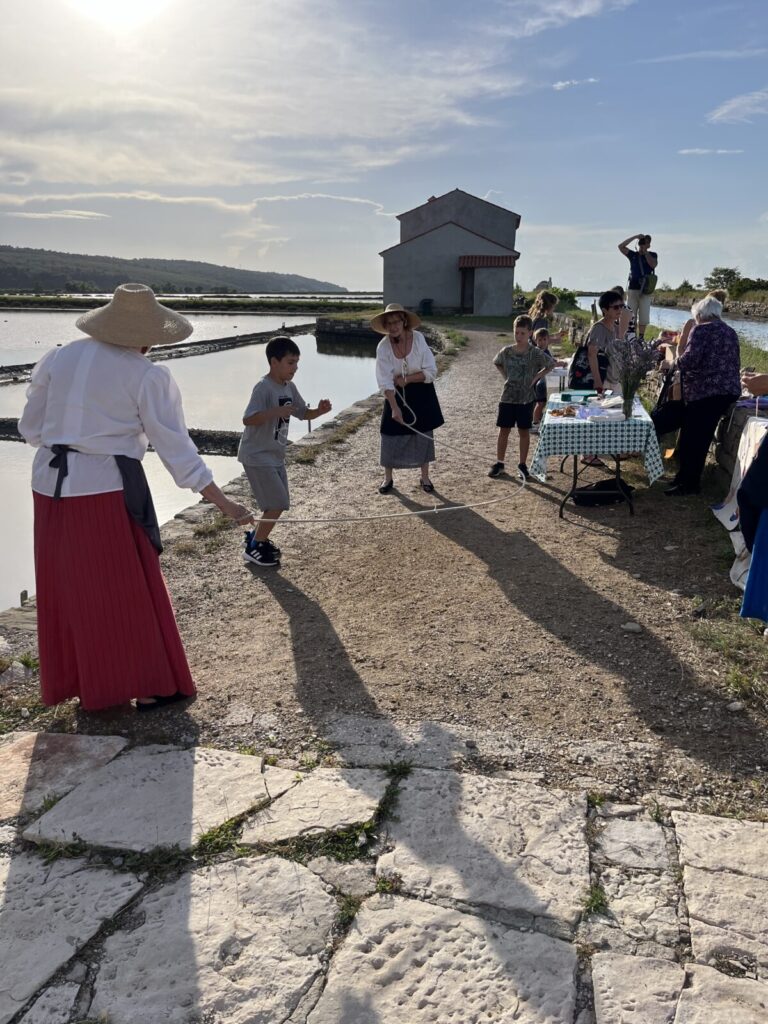
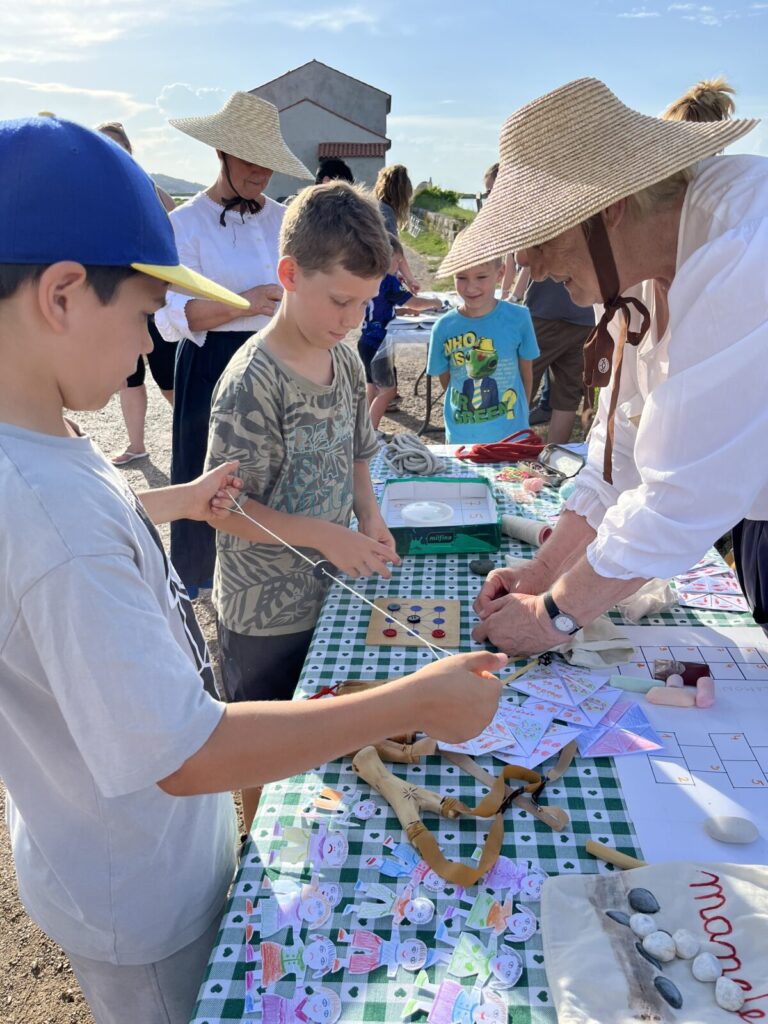
Finally, they talked about their typical lunch, which today consists mainly of bread, mortadella, pâté, yoghurt, tomatoes and other vegetables, as well as seasonal fruit, biscuits, rusk, various jams and vegetable spreads. Some salt farmers would bring home-cooked lunch to the salt pans, and sometimes they also treat themselves to a kebab or burek. Whereas that might be the case today, a salt farmer’s lunch in the past included locally produced ingredients that provided enough energy and nutrients for hard labour in the salt pans: homemade bread, prosciutto, olives, cheese, fish (often sardines), fresh vegetables and boiled eggs. This lunch reflected perfectly the simplicity and drudgery of a salt maker’s day-to-day life. We can therefore conclude that modern lunch habits in the salt pans are increasingly following the trends of urban eating. The discussion was followed by a friendly get-together, where visitors could see and taste the modern salt pans lunch. After a pleasant social gathering and a delicious lunch, the visitors returned by train to the Fontanigge entrance, enriched by a new learning experience and “tasty” glimpses of life in the salt pans.
Written by Barbara Bradaš Premrl, participant in the Grain of Salt project
Event organisers:
Sergej Mašera Maritime Museum in Piran, the Italian Self-Governing Community of Piran, the Giuseppe Tartini Italian Community of Piran, the Institute for the Protection of Cultural Heritage of Slovenia, manager of the Sečovlje Salt Pans Nature Park, the company Soline d.o.o., the Femea dei salinari folklore group, the Science and Research Centre of Koper (ZRS Koper) and the Muzofil Association.
Photographs by: Dr Jerneja Penca, Dr Maja Bjelica and Dr Primož Pipan.
This is the work of a team of researchers on the core research project “Grain of salt, crystallisation of coexistence: salt panning as an empirical environmental wisdom” (J6-50196), which is funded by the Public Agency for Scientific Research and Innovation of the Republic of Slovenia.
 en
en Slovenščina
Slovenščina Italiano
Italiano